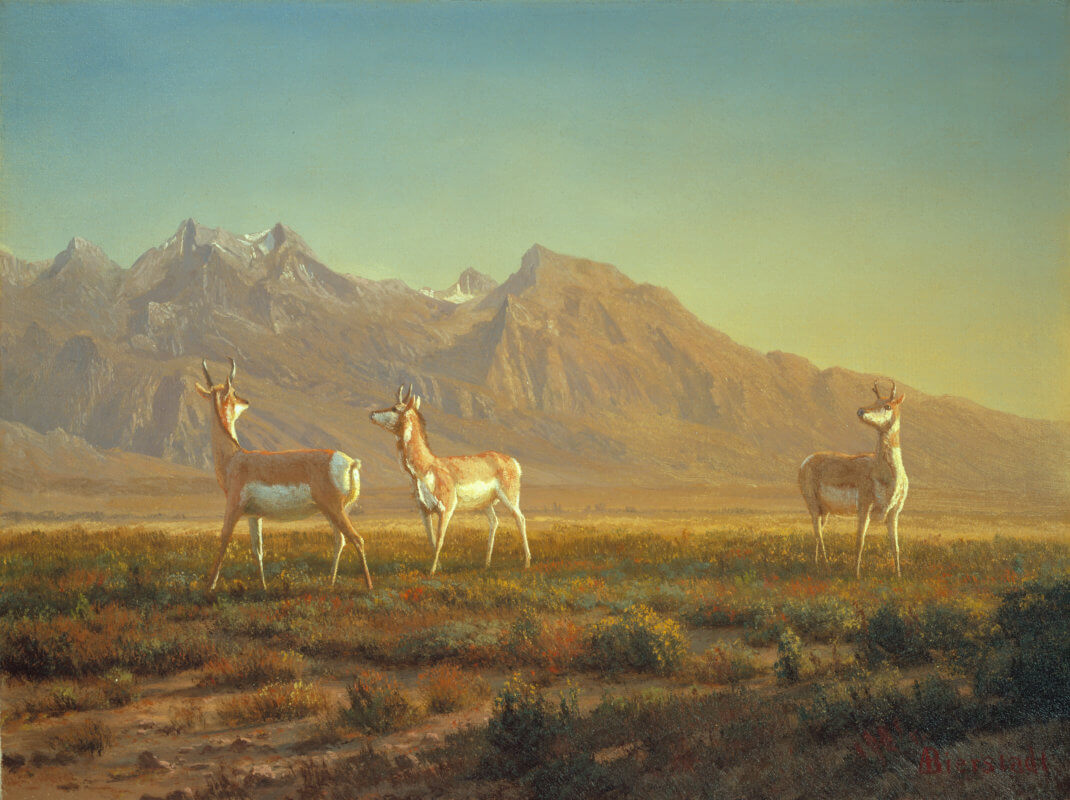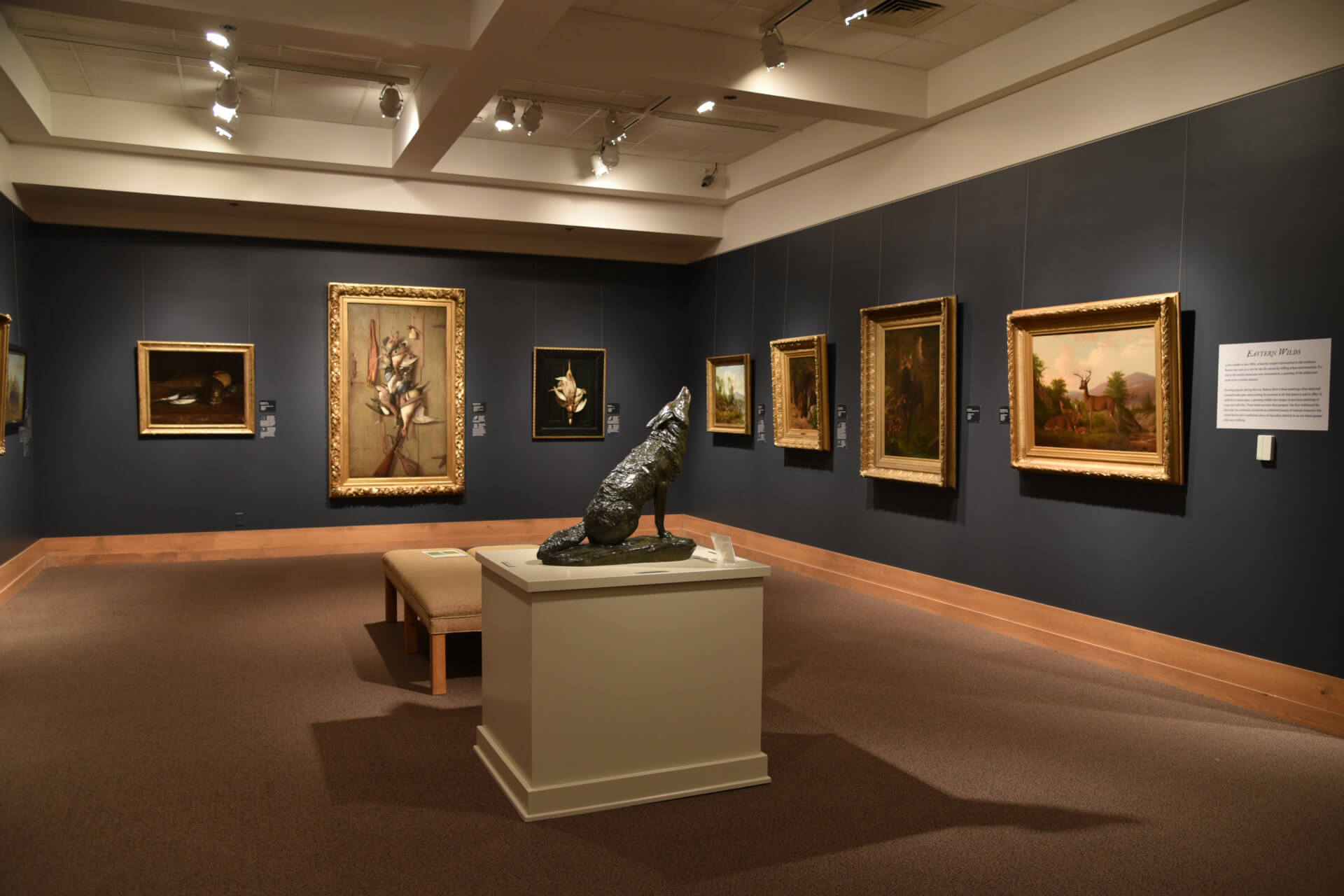Changing attitudes towards nature and wildlife are easy to see in the work on display in this gallery. The oldest works in the collection are six birdstones created by Southern Michigan and Northern Indiana tribes over 4000 years ago. These enigmatic carvings show the cross-cultural drive we share to express our relationship to animals through art.
One of the earliest paintings in the collection is Peaceable Kingdom by Edward Hicks, which uses animals to represent his hopes for peace as immigrants colonized North America. Later, artists depicted glowing scenes of wildlife in tranquil settings, capturing the sublime majesty of a continent many settlers saw as a gift from God, their manifest destiny to possess. As Europeans moved west, artists were often on the front lines of exploration. Work by the likes of George Catlin shows an interest in cataloguing North America’s fauna for audiences interested in the bounty of America’s wilderness.
By the late 1800s, wildlife art began to reflect a national sense of mourning over the eradication of millions of bison, the displacement of native peoples, and the degradation of bountiful resources. In the early 1900s, while some artists were creating nostalgic visions of what we had lost, others, like Carl Rungius, were painting remaining populations of wildlife as a reminder of what we still still had.



- 1
- 2
- 3
Staff Picks
Through May 10, 2026Curating this exhibit has been an exercise in collaboration, which is one of our core values at the Museum. We began by asking each staff member to make a short list of some of their favorite works in the collection. Then, the curatorial team took them to see a few of those pieces. We asked the staff to look for artworks that were not already on display and would not be part of any upcoming exhibitions. A person’s taste in art is so uniquely personal and individual to who they are. This exhibition is not only an opportunity for you to get to know our staff, but it is also a chance to discover new pieces in the permanent collection—or perhaps to see old favorites in a new light.
See the Exhibit- 1
- 2
- 3
Two of a Kind?
Through April 26, 2026This exhibition is an exercise in comparison. It invites visitors to consider pairs of artworks, drawn primarily from the Museum’s permanent collection, and contemplate the question posed by its title: are these artworks truly Two of a Kind?
See the Exhibit





